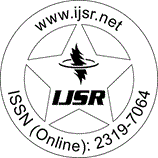Downloads: 155 | Views: 416 | Weekly Hits: ⮙2 | Monthly Hits: ⮙2
Review Papers | Mechanical Engineering | India | Volume 6 Issue 7, July 2017 | Popularity: 6.6 / 10
Crankshaft Design Optimality and Failure Analysis: A Review
Manish Kumar, Shiv N Prajapati
Abstract: The crankshaft in an internal combustion engine converts the linear reciprocating motion of the piston into a rotary motion with a four link mechanism. A crankshaft works in variably complicated conditions, and is subjected to torsional loads due to inertia of rotating components and bending loads due to gas pressure in internal combustion engines. Its behavior is affected by the fatigue phenomenon due to the reversible cyclic loadings. When repetitive tensile and compressive stresses are developed due to reversible cyclic loadings it leads to fatigue phenomenon which can cause dangerous ruptures and damages. Since a crankshaft is a highly stressed component in an engine, fatigue performance and durability of this component has to be considered in the design process Fatigue is the primary cause of failure of crankshafts in internal combustion engines. In this review paper, the design and forces analysis is carried out and fatigue phenomenon in crankshaft and optimal design is studied.
Keywords: Crankshaft Fatigue, SWT, Web, Monotonic
Edition: Volume 6 Issue 7, July 2017
Pages: 425 - 430
Please Disable the Pop-Up Blocker of Web Browser
Verification Code will appear in 2 Seconds ... Wait
